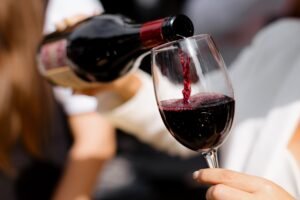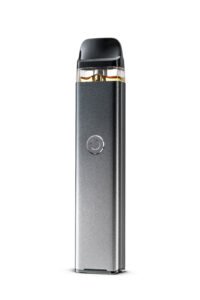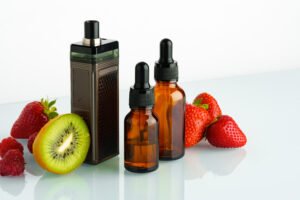When it comes to celebrating, nothing beats the pop of a cork and the effervescent joy of a glass of bubbles. But one question continues to bubble up: is sparkling wine the same as Champagne? And if not, what’s the real difference?
At Box of Wine, where we curate the best boutique wines tailored to Irish palates, we believe understanding what’s in your glass enhances the experience. Let’s explore the world of sparkling wine and Champagne—two drinks that look alike but are worlds apart in origin, technique, and taste.
1. All Champagne is Sparkling Wine, But Not All Sparkling Wine is Champagne
Let’s start with the basics. “Sparkling wine” is a category—it includes any wine with bubbles, made using various fermentation methods. Champagne is one specific kind of sparkling wine that comes from a very specific region in France, made under strict rules.
If a sparkling wine is not made in Champagne using the traditional method and approved grapes, it’s not legally allowed to be called Champagne.
It’s like saying:
All squares are rectangles, but not all rectangles are squares.
2. The Champagne Region – A Protected Name
To bear the name Champagne, a sparkling wine must be produced in the Champagne region in northeastern France. This region’s cool climate, chalky soils, and historical know-how make for uniquely crisp, high-acidity wines that age beautifully.
It’s not just about geography—it’s about terroir, tradition, and technique. The French government fiercely protects this designation through appellation laws (AOC).
So yes, that bottle from Italy, Spain, or even another part of France might taste delightful—but it’s not Champagne.
3. How It’s Made: Traditional Method vs. Others
Champagne is made using the Traditional Method (Méthode Traditionnelle), which includes:
- A secondary fermentation inside the bottle to create natural bubbles.
- Ageing on the lees (dead yeast cells) for at least 15 months, adding depth, complexity, and brioche-like aromas.
- A painstaking process of riddling (rotating bottles) and disgorgement (removing sediment).
Other Sparkling Wines might be made with:
- Charmat Method (used for Prosecco): Second fermentation happens in a tank, not in the bottle. This results in lighter, fruitier, fresher wines.
- Carbonation: Some lower-cost sparkling wines are made by simply injecting CO₂ into still wine (think soda bubbles—not complex, just fizzy).
4. Grape Varieties
Champagne is traditionally made from just three grapes:
- Chardonnay (white)
- Pinot Noir (red)
- Pinot Meunier (red)
Sparkling wines from other regions can use many different grape varieties, depending on local traditions and climate.
Examples:
- Prosecco (Italy): Made with Glera grapes
- Cava (Spain): Macabeo, Xarel·lo, and Parellada
- Franciacorta (Italy): Also uses Chardonnay and Pinot Noir—similar to Champagne but still not called Champagne
This grape variation leads to distinct flavour profiles—from green apple and citrus in Champagne to peach, pear, and florals in Prosecco.
5. Flavour and Complexity
Champagne is known for its refined, toasty, nutty, and complex flavours. Thanks to the long lees ageing, you’ll often taste:
- Brioche
- Almonds
- Citrus zest
- Apple
- Minerality
Sparkling wines, depending on how they’re made, can be:
- Light and fruity (Prosecco)
- Earthy and dry (Cava)
- Luxurious and bold (Franciacorta)
- Simple and sweet (Asti Spumante)
It’s not about better or worse—it’s about style and purpose.
6. Price Point
Let’s be honest—Champagne is expensive. It’s not just about prestige, but the meticulous process and limited supply. You’ll rarely find a good bottle under €35.
Sparkling wines, on the other hand, come at all price points. You can find excellent bottles under €15, especially from regions like:
- Spain (Cava)
- Italy (Prosecco, Lambrusco, Franciacorta)
- Even Ireland now produces quality sparkling wines!
If you’re looking for affordable luxury, a well-chosen sparkling wine can be just as enjoyable as Champagne—at a fraction of the price.
7. When to Serve What
Champagne:
- Formal occasions (weddings, anniversaries)
- Toasting at New Year’s
- Pairing with oysters, caviar, truffle fries
Sparkling Wine:
- Garden parties
- Aperitifs with cheese or charcuterie
- Everyday celebrations
At Box of Wine, we love including Prosecco or Cava in our tailored subscriptions—it’s festive, flavourful, and always appreciated.
8. Is Champagne Worth It?
Yes—Champagne is an icon. It’s history in a bottle. But do you need it every time? Not necessarily.
Sparkling wines offer a world of discovery: different methods, grapes, terroirs, and price points. From a lively Lambrusco with pizza to an elegant Franciacorta with roast chicken, there’s a bubbly for every mood—and every budget.
Final Thoughts: The Bubbly Bottom Line
Champagne is the original, the legend, and the gold standard. But the sparkling wine world is diverse, affordable, and delicious.
Whether you’re clinking glasses over a quiet dinner or throwing a festive bash, there’s a bubbly that fits. The key? Know your styles—and be open to exploring.
And if you’re not sure where to start, we’ve got your back.
Try Something Bubbly with Us
At Box of Wine, we hand-pick boutique sparkling wines—from Italian Prosecco to bold Spanish Cava—to deliver straight to your door in Ireland.
You’ll enjoy bubbles that delight, impress, and surprise—without overpaying.
Explore more at https://boxofwine.ie










